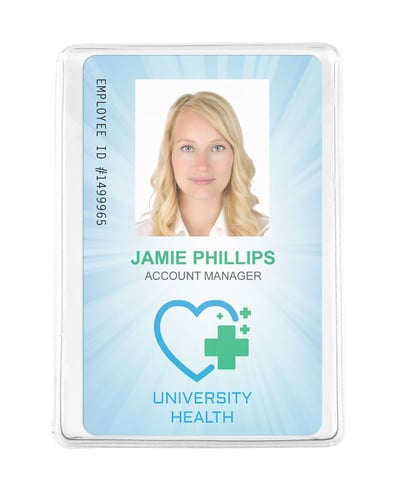- No products in the cart.
3 Keys to an Effective Hospital Safety & Security Program
13
Oct
Unfortunately, it's a frightening reality: violent incidents are occurring at healthcare facilities with an increasing degree of frequency.
While most hospitals and medical centers took an interest in security in the past, today's climate has made a stronger focus on security an essential part of any healthcare facility.
There's only one problem: adding a comprehensive security system to a hospital can be an overwhelming undertaking due to the number of things that need to be taken into consideration.
Making a healthcare facility more secure is a lot more complex than, say, securing a small office building.
At the office building, adding a security guard to the front desk and some locks to the doors should be enough, as most offices aren't dealing with dangerous/controlled substances and there won't be many visitors coming and going.
It's a very different story at a hospital, however.
On the average day, visitors come to see patients, pharmaceutical representatives visit doctors and there's staff changeover with interns coming and going or physicians visiting from other hospitals.
It gets chaotic pretty quickly. So how do you cut through the noise and find that perfect, effective hospital security plan?
Focus on three distinct areas
The key to creating a comprehensive hospital security program is to avoid the desire to find a "one size fits all" solution. With so many aspects to cover, you're unlikely to find a "does it all" system that actually works.
Instead, focus on three things:
- Ensuring only authorized personnel are on site.
- Processing guests to prevent those with bad intentions from getting inside.
- Securing the sensitive rooms of your facility.
These three things can also bucketed as focusing on employee ID, Visitor Management and access control.
Here are three things (one from each bucket) that you can do to make your hospital a safer, more secure place for patients, staff and guests.
1. Purchase and install hospital Visitor Management software.
One of the most important customer-facing things a hospital can do is welcome guests appropriately. A visit from a loved one can be the boost a sick patient needs, or can help inspire a patient in need to stay positive and keep going.
Unfortunately, welcoming guests also poses a security risk. After all, you're essentially allowing complete strangers to wander around your facility.
This push-pull between welcoming guests and maintaining security is the main reason why a hospital Visitor Management system is so important: it allows a facility to welcome guests while screening them for potential issues.
Visitor Management systems come in a variety of shapes and sizes, but in the case of large facilities, hospital Visitor Management software is essential; a simple log book isn't going to cut it.
The best Visitor Management software can scan a guest's driver's license, check names against watch lists, issue expiring visitor badges and more.
By vetting every guest (and preventing unwanted guests from getting inside), you're taking a drastic step toward increasing hospital safety for all.
Tip: Consider investing in a Visitor Management solution that includes HL-7 integration. This will allow your system to integrate with your internal database, making it easier to send guests to the right room.
2. Issue a quality hospital ID badge.
Hospital ID badges are a requirement in most parts of North America.

Organizations like The Joint Commission and OSHA often require (or "strongly encourage") facilities to implement employee ID badge programs, and some states have laws on the books requiring ID use.
However, one way to add a layer of safety to your hospital is by adding more security to your ID cards themselves.
Hospital budgets are often tight, so many organizations limit their ID badges to the simplest (i.e. most affordable) solution possible. This may make things easier on the wallet, but it also makes things easier on counterfeiters, as designs are usually pretty easy to copy.
Instead, spend a little more on your employee ID badges and help ease the worries about impostors or security breaches by people posing as employees.
Consider using custom-shaped ID cards, adding ID card security features like UV printing or MicroText and adding your facility's emergency codes to the back to make your cards more unique.
The more unique they are, the harder they'll be to copy, helping you ensure that your employees are the only ones with access to those valuable badges.
Tip: Once you get started with your ID program, make sure you save your final design to use in the future. Using a hospital ID badge template makes it much faster to issue new or replacement cards down the line.
3. Limit access to certain areas with a hospital access control system.
Hospitals are unique in that they welcome so many people while also having so many areas that need to be secured. Oftentimes these areas are right next to each other: patient rooms are next to the pharmacy, for example.
This makes it essential to have a hospital security system that differentiates between accessible rooms and rooms that need to be off-limits to all but a select few.
However, you don't want this system to be cumbersome, or to cause doctors to have to run around looking for a key to get into the supply closet.
This is where a modern access control system comes into play: it allows a hospital to choose different levels of security for different doors, all while making them accessible to select cardholders.
Adding a hospital access control system to your facility also makes it easier to manage all of your doors. You're able to view and respond to alarms, view integrated surveillance video, lock down your facility and more — all from a central location.
Tip: For sprawling hospital campuses, consider using an access control system that offers a mobile application. This will allow your security personnel to keep an eye on all aspects of your site while doing their rounds.
Securing a hospital doesn't need to be overwhelming! Our staff have years of experience with all aspects of the ID, Visitor Management and access control solutions discussed above. If you'd like more information, please contact us using the button below.

 USA
USA





